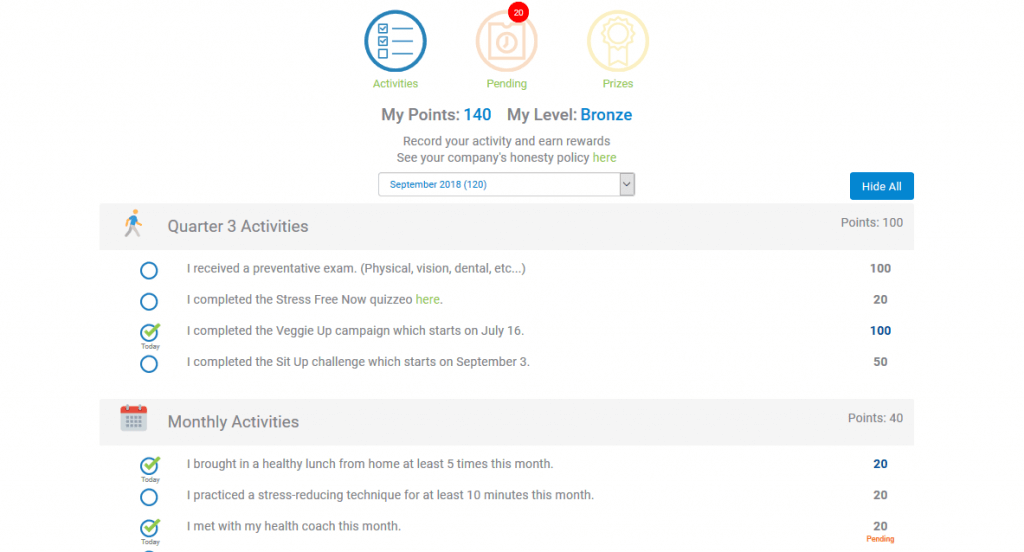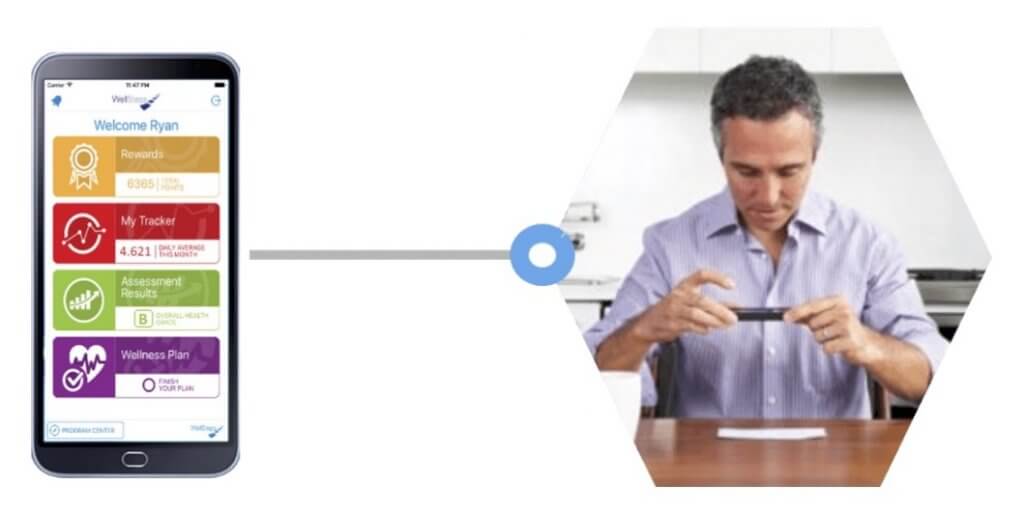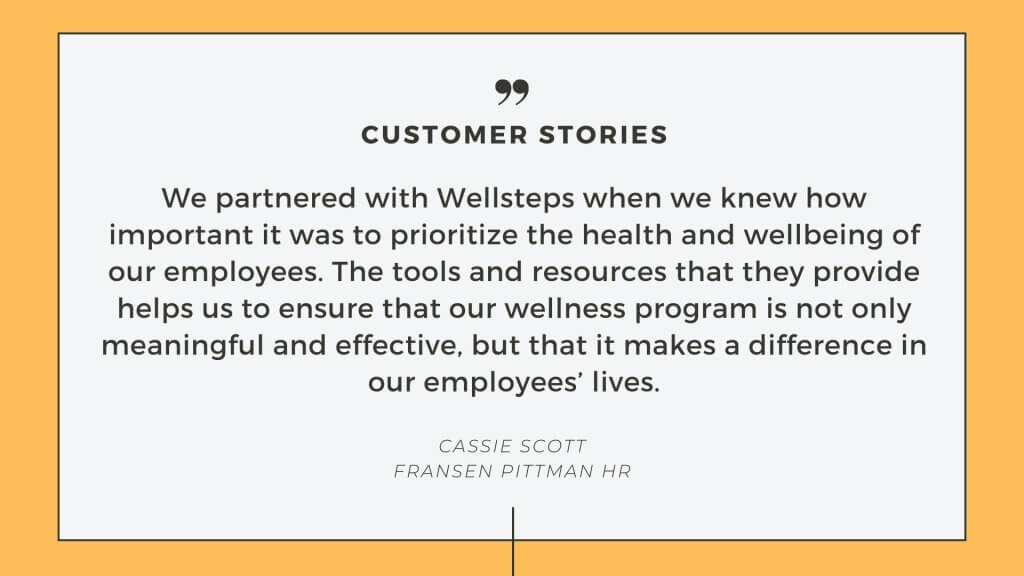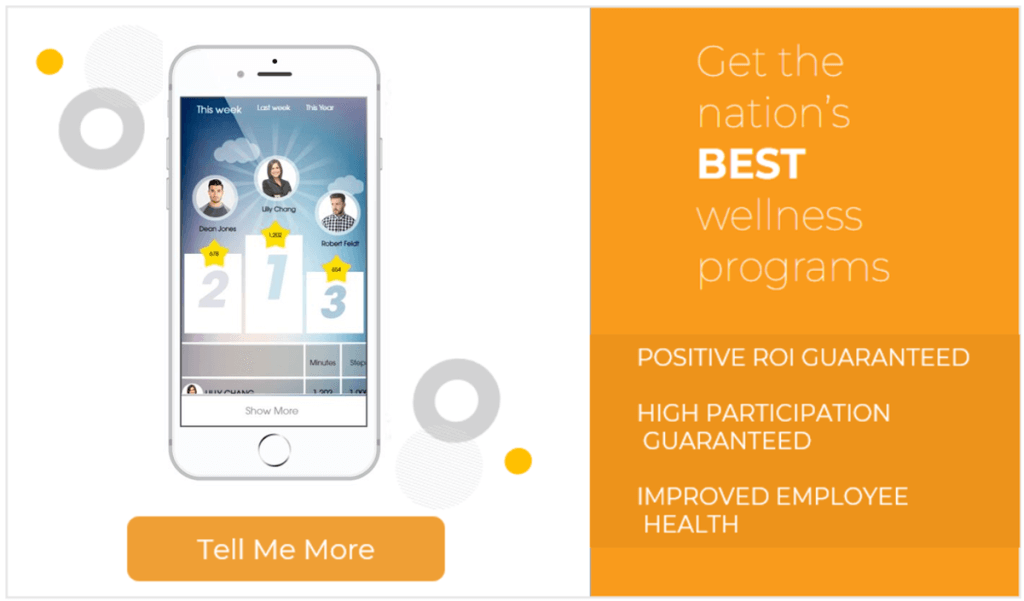Unless motivated, most employees will have a hard time beginning and maintaining a healthy lifestyle. Because, behavior change is one of the most difficult things that we do as humans. Every successful well-being program has implemented some form of these wellness program incentive. The following ideas help employees start changing their behavior.
There are many types of incentives. And, employees must meet various requirements to earn those incentives.

In the past 10 years, WellSteps has helped hundreds of clients set up and manage well-being incentive plans. We’ve seen just about every kind of incentive and qualification requirement possible. Some of these have been a huge successes and others—not so much. Here are the best wellness program incentive ideas we’ve seen.
RELATED: Wellness Program Incentives: The Complete Guide
Why Use Wellness Program Incentive Ideas
The goal of the wellness program is to help employees adopt and maintain healthy behaviors. Employees perform best when they feel internally motivated to stay healthy. But sometimes employees get stuck in unhealthy habits and need help adopting and maintaining healthy behaviors.
The best way to do this is to provide small incentives, such as gift cards, to randomly selected employees who successfully complete different aspects of the wellness program. We have great published scientific evidence that this incentive approach works. It is the incentive approach that WellSteps recommends to all of our clients.
Employees can qualify for a drawing if they complete a personal health assessment, biometric screening, a behavior change campaign, or a challenge. All employees do not get an incentive for completing the target behavior because that leads to entitlement. Instead, they earn the chance to win—sort of like the lottery, only not as big. Just having a chance to win is fun and is sufficient to motivate most employees.
For example, when 350 out of 500 employees in a company complete a behavior change campaign, all 350 get entered to win gift cards, prizes, or event tickets. These small gifts given immediately upon program completion make the program more fun. They create the opportunity for vicarious reinforcement, and provide substantial motivation to participate at very little cost.
RELATED: 18 Wellness Program Incentive Ideas From the Best Corporate Wellness Programs
Benefits-based Wellness Program Incentive Ideas Worth Having
Employers get even greater adoption of employee health behavior with a benefits-based incentive plan. Benefits-based well-being incentive programs typically offer employees:
- discounts on their insurance premium
- paid time off
- contribution to an HSA or HRA
- lower co-pays or deductibles
Benefits-based incentives are considerably more expensive than randomly selecting winners of small gifts. But they also have more impact on employee engagement. All employees who complete the work to earn the reward receive these incentives. Many WellSteps clients offer a $50/month health insurance premium discount. This adds up to $600 per year budget per employee who qualifies.
The dollar amount of the benefit-based incentives should be large enough to motivate employees. But not so large that it creates an entitlement mentality among program participants. Benefits-based incentive requirements should be substantial because the financial incentive should also be meaningful. We have noted over the past 14 years that a premium differential incentive in the range of $30-$40 per month is optimal for achieving best outcomes.
When combined with simple, short-term prizes, benefits-based incentives will provide employees with motivation. Hopefully, enough to get the wellness ball rolling until they begin to feel the internal benefits of a healthy lifestyle.
When combined with simple, short-term prizes, benefits-based incentives will provide employees with enough motivation to get the wellness ball rolling until they begin to feel the internal benefits of a healthy lifestyle.
RELATED: How Effective Wellness Programs do Wellness Incentive Management
Tracking Wellness Programs With Great Platforms
Don’t forget, though, to make it easy for employees to report their progress towards earning the incentive. The WellSteps rewards program is our web-based incentive tracking platform.

Undoubtedly, this platform allows employees to easily report completion of incentive requirements. Most often, the system automatically reports the completion of requirements when employees finish a campaign or challenge. However, sometimes, employers require employees to provide verification that they have completed certain activities.
Thus, to make this process simple, the WellSteps app allows employees to take a picture of the verification and have it automatically uploaded to their account. In short, the rewards incentive platform makes it easy to track and validate employees progress towards earning their incentives.

Wellness Program Incentive Ideas from the Nation’s Best Corporate Well-being Programs
For the past 25 years, the C. Everett Koop Health Project has carefully evaluated wellness program applicants and awarded the very best well-being programs in the United States with the Koop Award. The application process is certainly rigorous and requires programs to provide ample documentation that their programs improve employee health behaviors and reduce employee-related costs.
But it is the most rigorous wellness program evaluation in existence. Only the best corporate well-being programs even attempt to apply, and only the best of the best actually win the Koop award. Below are two lists:
- Incentive ideas from someone who reviewed applications from the nation’s best corporate wellness programs, and
- incentive qualification requirements used by these organizations.
Hopefully, these two lists will provide ideas that improve the effectiveness of any well-being program.
RELATED: How Effective Workplace Health Programs Reduce Health Care Costs
Wellness Program Incentive Ideas from Koop Award Applicants
- “Health cash” for employees and spouses not participating in company health insurance plan but participating with sustained engagement in company wellness program.
- Up to 12% discount on employee health insurance premium contribution.
- 5% premium discount for sustained yearlong participation in the wellness program.
- $500 gift card raffled bi-weekly to encourage engagement.
- $50 to $100 for enrollment or completing well-being requirements.
- $100 for completed HRA, biometric screening, personal health report with action plan & optional health coaching.
- Raffle off a full day of paid time off for completing a health assessment.
- Bonuses and merit pay increases tied to program participation.
- Raffle of an all-expense paid trip to a 14,000-foot mountain climb.
- Contributions up to $1,000 into a health reimbursement account.
- Up to $800 per couple into additional Health Reimbursement Arrangement funds.
- Discounts or reimbursement of up to $400 annually for off-site fitness club memberships.
- Tobacco-free discount on medical plan premiums. For example, 20% off medical premiums for non-users or users who participate in a certified smoking cessation program.
- $100 for completing a qualifying smoking cessation program.
- Up to 6 months Weight Watchers per year with active participation.
- Flex benefit credits.
- Drawings for iPads, TVs with Wii Fit, gift cards, travel vouchers, fitness equipment, and T-shirts.
- Celebration and recognition events.
Wellness Program Incentive Ideas from Koop Award Applicants
Company 1
- The company incentivized over 30 verifiable activities and measurable outcomes..
- Employee only/employee received a $100/$200 contribution discount by completing an HRA, selecting a goal based on their unique health risks, and participating in five well-being-related activities.
Company 2
- Eligible for a $150 medical plan premium credit by earning points for participating in wellness behavior. Employees who showed documented health improvements or maintained a current level of health were eligible for premium credit or the top program in a tiered medical plan.
Company 3
- The incentive plan was designed to reward those for maintaining a healthy weight (as measured by BMI) or losing 10% of their weight if they began the year with an above normal BMI. Participants losing between 0% and 9.9% were rewarded with partial points to recognize the effort of small changes.
- Incentive points were also provided for those who reported body weight once each week for 20 weeks during the program year.
- Employees could also earn a year-end wellness bonus.

Company 4
- The company administered premium differential incentives monthly for program compliance and recovered costs from non-participants.
- The HRA and biometric screenings were a necessary gate for wellness health plan entry.
- The company leveraged corporate incentives to promote group behavior changes and improve corporate culture, earning national health promotion awards.
- Fitness Center participation incentives were $480 or more
- Additionally, Weight Management participation incentives were $250 or more
- For program Year 3, participants received $25 cash for health risk assessment completion, and $50 cash quarterly wellness bonus for continued participation in programs.
RELATED: How the Best Worksite Wellness Programs Change Behavior
Company 5
- Parking incentives for using the most remote spots.
- Discounted health insurance premiums to employees who took a health pledge and a health risk assessment and agreed to a smoking cessation program, if needed.
- In addition, the company provided discounts on cafeteria selections with higher nutritional value.
- The company also regularly offered employees coupons for healthy food choices at a local supermarket chain..
- Additionally, leadership and peers recognized employees in several ways.
Company 6
- Employees earned points to be active and eat well, which they could cash in for up to $300 annually or for up to 12 hours of paid time off.
- To motivate employees to “know their numbers,” the company offered free screenings and incentives like free movie tickets for completing a personal health assessment, as well as a chance to win a free iPad and other prizes in drawings.
Company 7
- The company contributed $600 to the health plan for employees and their spouses/domestic partners who participated in the annual on-site screenings and health assessment.
- In addition, when employees and spouses engaged in healthy activities, they earned “miles,” which served as a common currency to reward healthy behaviors and promote conversation about health improvement activities.
- Health management program participation lead to a significant cash incentive in the form of a payroll reduction for health plan contributions.
- To sustain engagement in health improvement activities beyond the health plan contribution, employees and spouses/domestic partners who continued beyond the base incentive were rewarded with Health Cash.
RELATED: 10 Employee Wellness Gifts to Incentivize Healthy Behavior in the Workplace
Company 8
- The company replaced the sick leave policy with a wellness-based incentive policy.
- The maximum incentive award an employee could earn per year was 3 days of pay.
- The company also offered an educational online option, allowing shift employees and those unable to participate in other programs to gain health awareness and earn incentive dollars. Employees had to complete four modules, and a post-test with a score of 100% tracked the credit at the session’s conclusion.
Company 9
- A maximum of $600 in benefits premium reduction could be earned for completing the health assessment. Employees also had the option to earn up to $300 (employees/spouses) to put into a Health Savings Account if specific health programs were completed.
Company 10
- Reward of $75 with a maximum opportunity to earn $250 per year, to meet with a health coach and bring in copies of their preventative exams.
Company 11
- All employees completed an annual health assessment with biometrics and completed a health action plan to receive up to $800 contributed to their Health Reimbursement Account.
- Employees enrolled in the medical plan received a $200 incentive if they complete a health assessment—and another $200 if they created/agreed to follow a health action plan.
- Employees receive $400 more if their enrolled spouses/domestic partners did the same.
- Reimbursement for off-site fitness club membership (up to $400 per family annually) if participants/spouses used the club at least two times/week (average).
- A discount of about 20% off medical premiums was offered to tobacco non-users or users who participated in a certified cessation program.
- Two free Weight Watchers sessions for up to six months per year if active participation.
- Prizes and recognition for winning and drawings for participation in local health competitions and events.
- Additionally, participation incentives included pedometers, iPads, flatscreen TV w/Wii Fit, etc.
RELATED: 13 Corporate Fitness Programs That Lead the Pack
Company 12
- Employees were rewarded an annual $390 health insurance premium reduction for completing the health assessment.
- Incentives were provided for participation in exercise, fitness centers, Weight Watchers, smoking cessation, disease management or health risk reduction programs. Employee’s health reimbursement account (HRA) was credited $300 ($200 for spouse) for biometric screening and $130 for being a non-tobacco user.
- Employees with identified conditions (diabetes, hypertension and cardiovascular disease) also received a 50 percent co-insurance reduction for drug costs related to managing those conditions.
- Participants were given a $100 incentive upon weight management program completion as well as the opportunity to receive gift cards during the program.
Company 13
- Personal Health Assessment incentive of $100 per year.
- Tobacco-free discount of $10 per week.
- 24/7 nurse advice call-line.
- Preventive screenings, onsite support groups, pharmacy medication therapy management and free diabetic supply programs, proactive case and disease management, and onsite medical services were provided for office/warehouse employees.
- Value-based program was also offered to tobacco-users who wanted to quit using Chantix and who completed related telephonic coaching programs.
RELATED: The Costs and Advantages of an Employee Wellness Program
Company 14
- A year-end incentive award was offered for completing a program. But, there were different tiers of achievement so someone not meeting all of the criteria still had a chance to earn an award and thus had incentive to participate. Any participant reaching the highest tier of achievement, in addition to the monetary award, was entered into a drawing for a trip for 4 to Disney World. Six trips were given away each year.
- Those participating had an incentive to quit tobacco and/or remain tobacco free. Attesting to being tobacco-free and remaining tobacco-free all year saved participants $11 a week off the health insurance premium. An employee who started the year as a tobacco user but who quit at any time during the year, were eligible for a premium reduction from that point to the end of the year.
- Incentives were increased by raising the maximum potential end-of-year cash payout by $150 (from $250 to $400) and by introducing the employee premium discount which could be worth more than $500 a year.
Company 15
- Those with specific health risks who agreed to quarterly telephone conversations with health coaches were immediately eligible for reduced premiums or credits.
- Employees who declined to participate in the wellness program though forfeited premium discounts totaling $500 or more annually.
- However, employees with targeted chronic diseases such as diabetes, coronary artery disease or congestive heart failure or who were pregnant at the time, were eligible for additional incentives worth $460 per year.
Putting Your Wellness Program Incentive Ideas Together
So, hopefully you can see that there are many options, ideas, and combinations of ways you can put together an incentive program to support your employees’ wellness. However, You don’t need to feel overwhelmed or create your program without help. And, it doesn’t matter if this is entirely new to you or if your current program needs a refresh.
Here at WellSteps, we’re happy to help you wherever you are. In fact, your’re invited to a free demo with a member of our team. So, come discover how to take your benefits package and your employee’s wellness to the next level of your company’s success.

Frequently Asked Questions About Wellness Program Incentive Ideas
What are good wellness prizes?
In general, depending on your company’s budget, wellness prizes can range from physical and digital gifts or prizes from $10 to $300. The key is to have the value just high enough to motivate your employees, but also to not make them feel entitled by participating.
Having a variety of options that employees can win by participating meets more of the desires of more of your people. Use your wellness committee to brainstorm different options, or get feedback from employees on exactly what prizes or items they’d desire. But, You may need a bit of trial and error.
RELATED: Wellness Program Incentives: The Complete Guide
What are some incentive examples?
Incentives can range from cash prizes, increased benefits, and even swag or activities. Letting your employees choose from a variety of options based on their participation in your wellness program is even greater incentive than just holding a basic raffle drawing.
Some examples that we’ve seen with WellSteps clients are all across the board and work well in their own ways. Such as:
- gift cards
- quality gym bags or swag
- memberships to local health oriented places
- extra paid time off
- off-site wellness classes
- group activities during work hours
- bonuses for hitting health goals
How to you incentivize employee wellness?
Your employees need to know, specifically, all of the benefits of making a healthy behavioral change or participation in the program up front. This involves more than just educating them on health benefits. We all know how to be healthier. Employees and the company need greater motivation and engagement to see real benefits.
So, after deciding on the incentives, clearly communicate them within your wellness program to employees. They should know up front before even starting their program so there is no confusion or surprises.
RELATED: 10 Employee Wellness Gifts to Incentivize Healthy Behavior in the Workplace

If I was an employee for a company, I think I would really enjoy having a wellness program with different incentives. Things like gift cards, or prizes would for sure motivate me to participate in the wellness program. I like the idea because it has a group of people come together to learn how to live a better, healthier, lifestyle. I think it is a fantastic program!
Comments are closed.